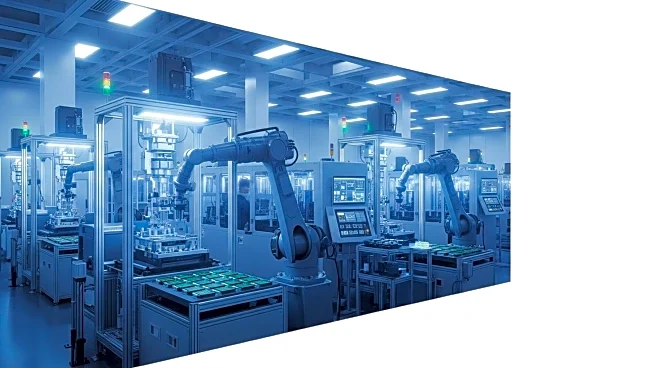What's Happening?
The U.S. is experiencing a surge in data center construction, driven by significant investments from tech giants like Apple and CoreWeave. These projects, while appearing straightforward, involve complex contracts due to sophisticated power and utility needs. Contractors face challenges such as supply chain issues, labor shortages, and regulatory compliance. The fast-paced demand for data centers, fueled by the rise of artificial intelligence, has made rapid project delivery a norm, increasing the risk of errors and safety incidents. Key materials like copper are subject to price fluctuations and tariffs, complicating cost predictions for contractors.
Why It's Important?
The boom in data center construction reflects the growing demand for digital infrastructure, crucial for supporting AI and cloud services. This trend presents lucrative opportunities for the construction industry, but also introduces significant risks. Contractors must navigate complex legal and logistical challenges, including material costs and labor compliance. The industry's ability to manage these risks will impact the speed and efficiency of data center deployment, influencing the broader tech sector's growth. Successful navigation of these challenges could lead to substantial profits, while missteps could result in costly delays and safety issues.
What's Next?
As the demand for data centers continues, contractors are likely to adopt strategies to mitigate risks, such as incorporating price acceleration clauses and pre-purchasing materials. The industry may also see advancements in cooling technologies, which could alter contract negotiations. Additionally, the focus on cybersecurity will intensify, with increased emphasis on protecting sensitive construction data. The ongoing evolution of regulations and technologies will require contractors to remain adaptable and proactive in managing contracts and project execution.
Beyond the Headlines
The data center construction boom highlights broader economic and technological shifts, including the increasing reliance on digital infrastructure. This trend underscores the importance of skilled labor and the need for robust cybersecurity measures. The industry's response to these challenges could set precedents for future construction projects, influencing contract structures and risk management practices. The integration of emerging technologies, such as liquid cooling, may also drive innovation in construction methods and materials.












